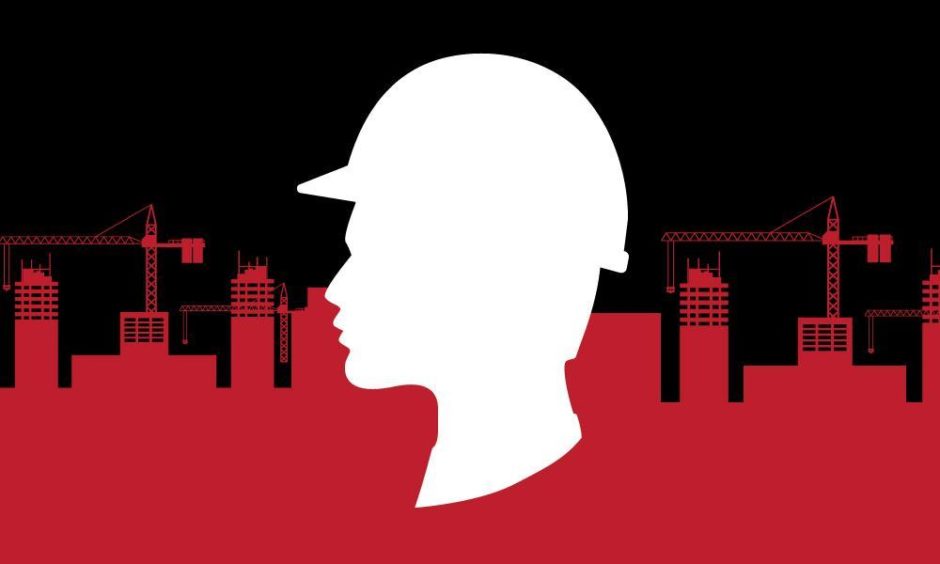
Labour exploitation remains the most prevalent form of modern slavery within our society.
In some cases, we have learned that construction workers in Aberdeen are being forced to work without pay and fruit pickers in Perthshire live in fear of the gangs who control their jobs.
At least 215 of the 387 cases of human exploitation referred to Police Scotland in 2020 contained some form of labour exploitation.
During the Covid-19 pandemic, despite a 41% drop-off in calls to the Unseen helpline concerning Scottish labour exploitation, the issue still remained the highest form of modern slavery reported to the charity.
Statistics show that labour has been the problem area witnessed by the organisation since 2017 when their report begins.
Urban industries like nail bars, car washes, construction and the hospitality sector are considered at risk for labour exploitation while rural industries such as agriculture, food processing, forestry and fishing can also be problematic.
Like criminal and sexual exploitation, victims in labour situations can often struggle to recognise themselves as such.
These people may also have been moved around and exploited like those in the sex industry and cannabis farms.
“Pre-pandemic we would see the car washing industry, we would often see trafficking and labour exploitation, and nail bars as well,” said Detective Inspector Calum Smith in Inverness.
“More recently we had a young Vietnamese male self-report that he had been trafficked into the country.
“We have linked to him through staying at an address in Inverness (but) when you start looking at the intelligence picture back the way, you start to see links back into the labour exploitation market in nail bars about 18 months ago.
“Then you start to see links back down towards the central belt in terms of people of interest who (we) have known to be involved in trafficking and exploitation of victims.”
Transgenerational trauma
As well as working for little money and living in cramped and inhumane conditions, victims of modern slavery can also have serious health conditions brought about by their working environment.
Some have been forced to have limbs amputated.
Joy Gillespie, development manager at Survivors of Human Trafficking in Scotland (SOHTIS), explained that vulnerable victims are often put to work without the correct protective equipment, leading to serious health issues.
“The serious physical and psychological effects of trafficking are horrific,” says Joy.
“It’s common for people that have been trafficked to have serious health problems.
“We’ve seen men that have had to have amputations because they have been working in car washes and don’t have the proper footwear and they are working in water all day.
“The trauma that they suffer goes on and is really profound and enduring and can be transgenerational.”
One case of labour exploitation brought to the attention of Scotland Against Modern Slavery involved a construction worker in Aberdeen.
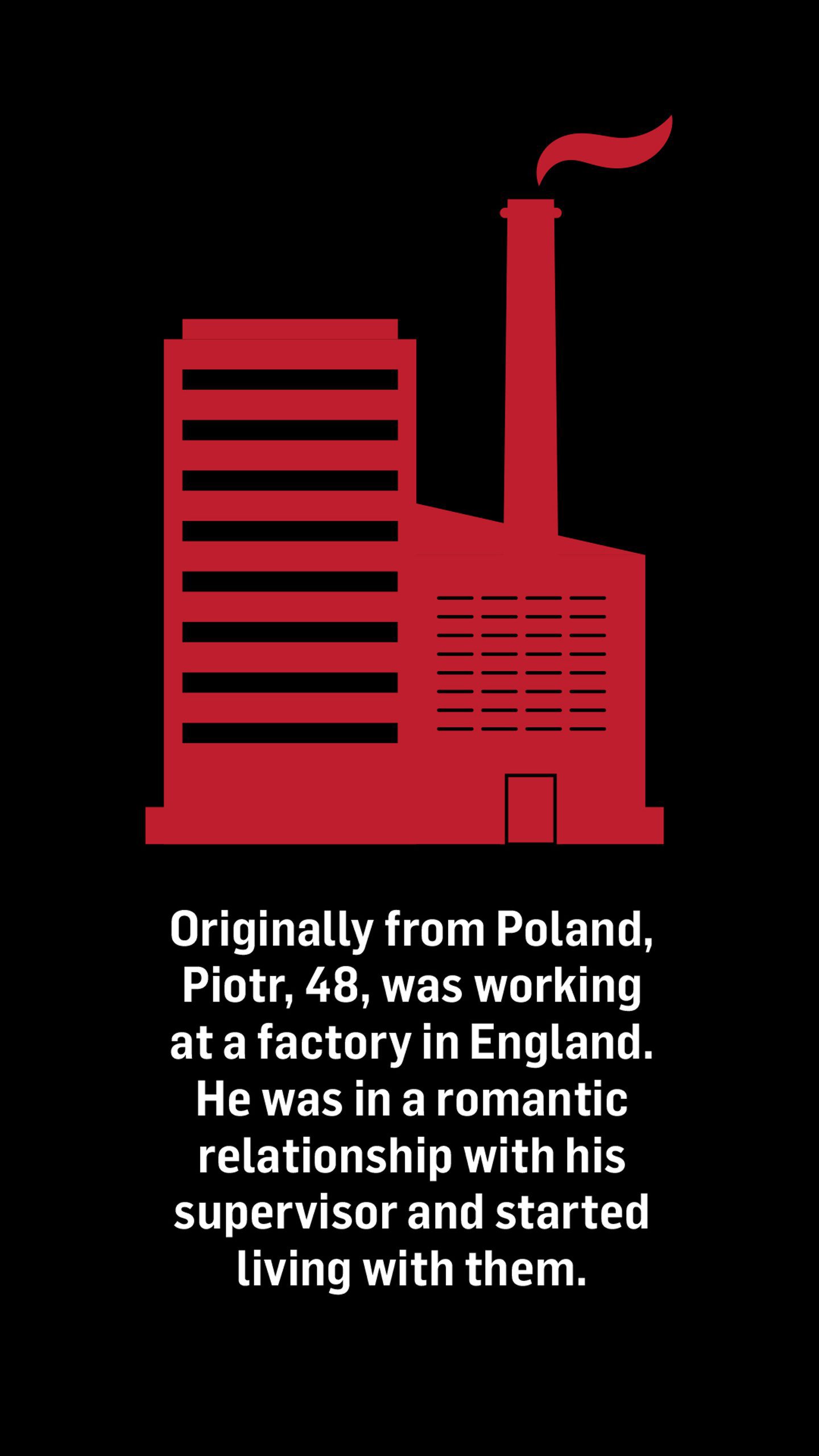
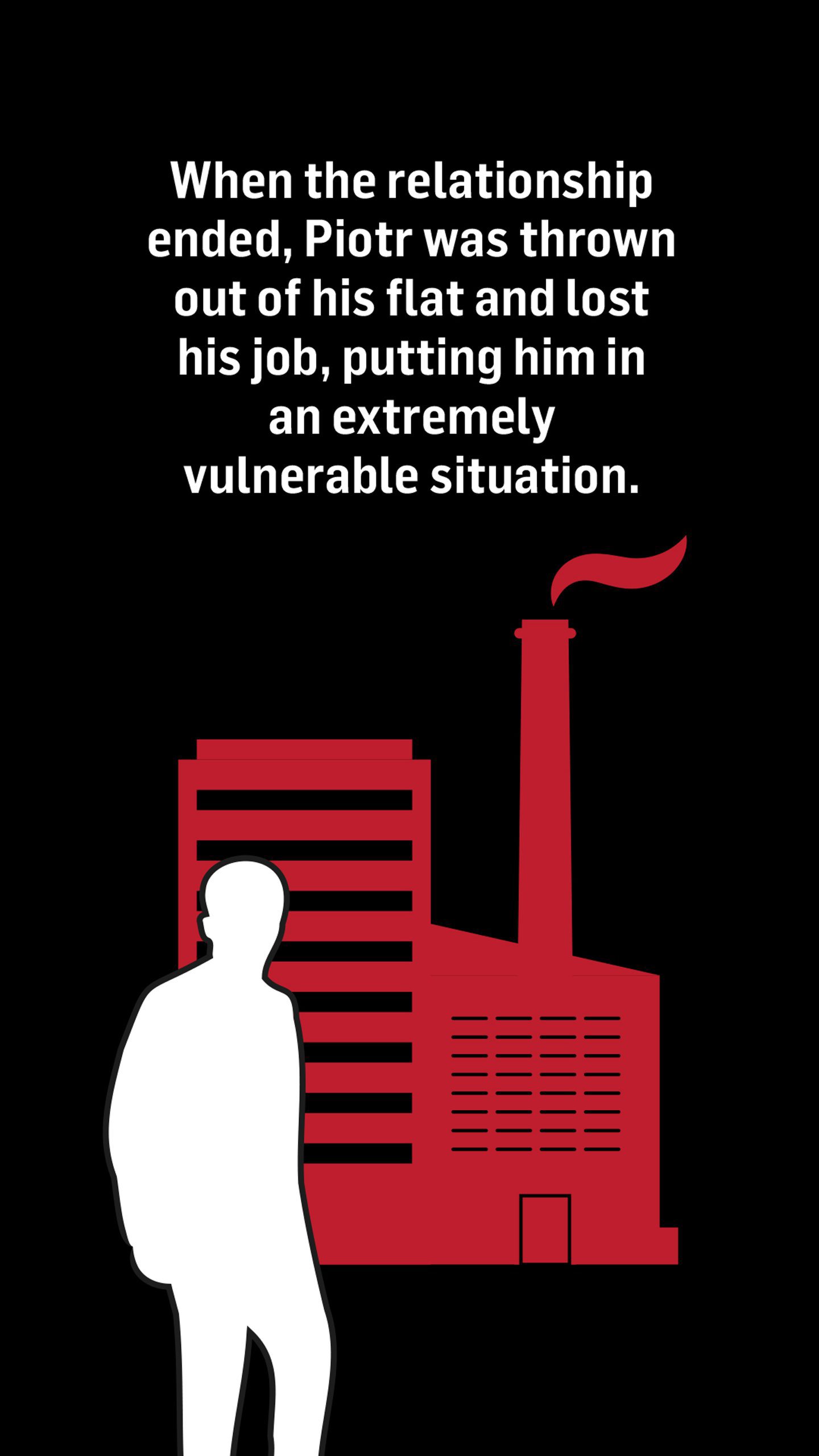
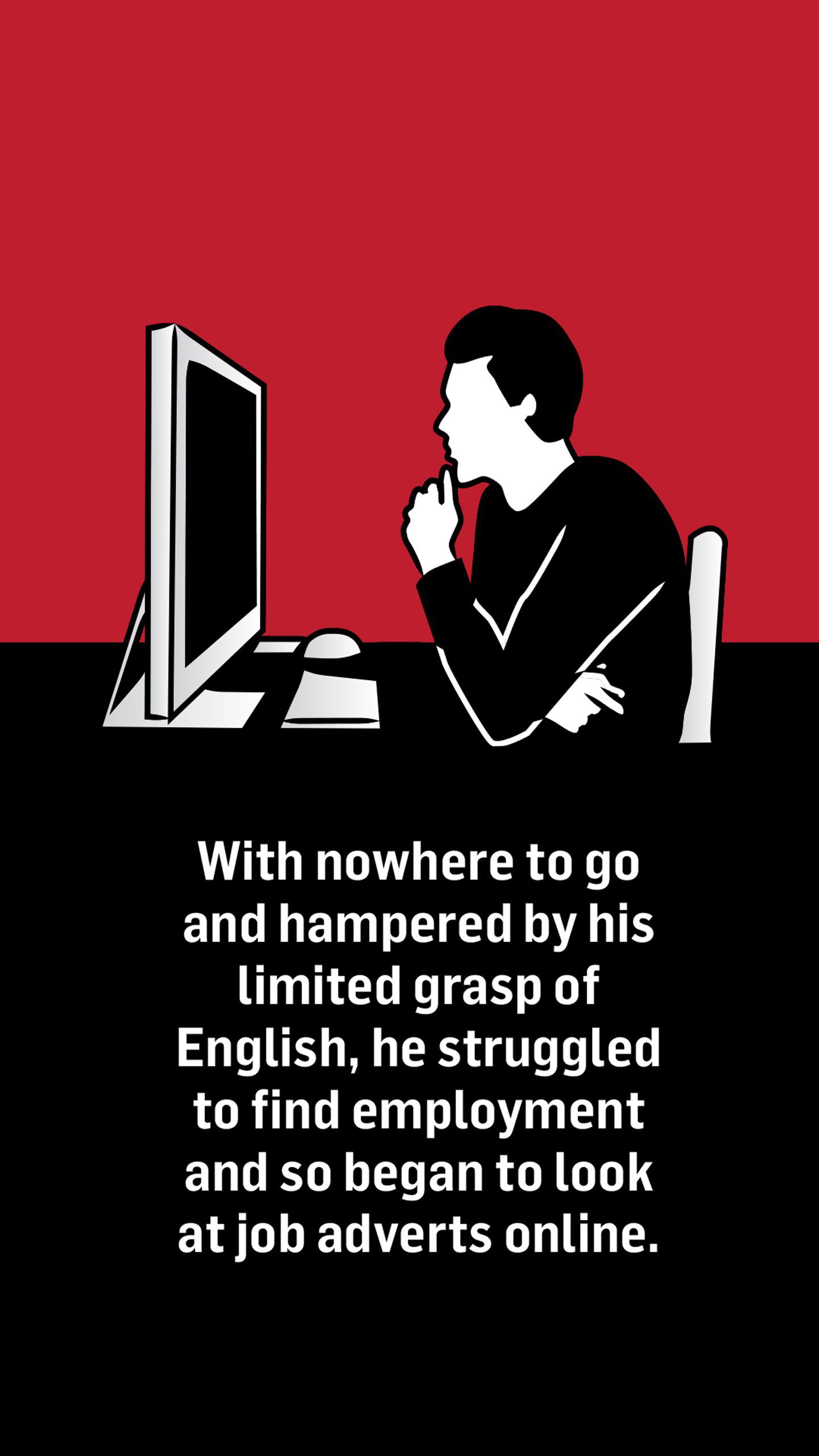
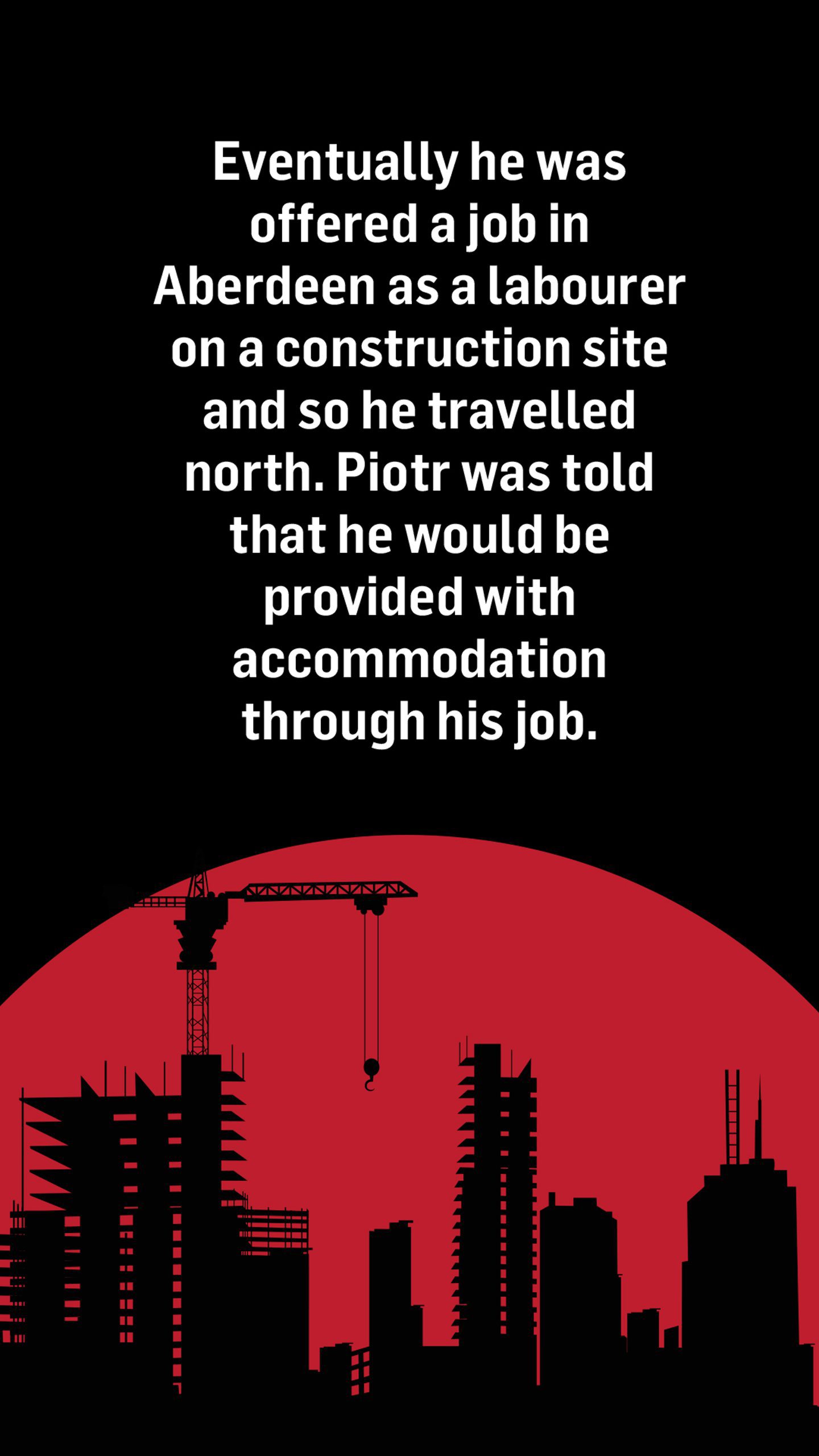
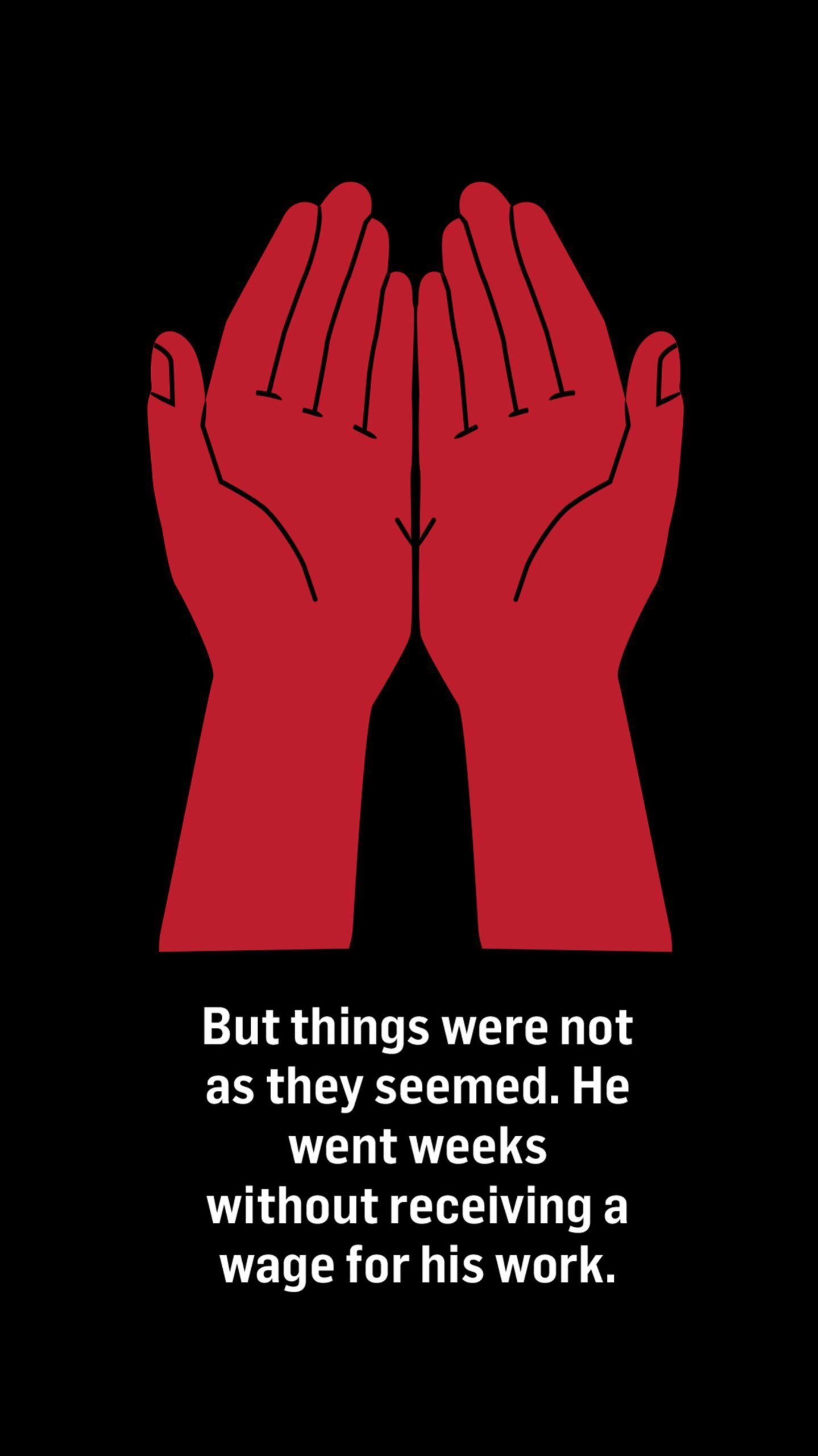
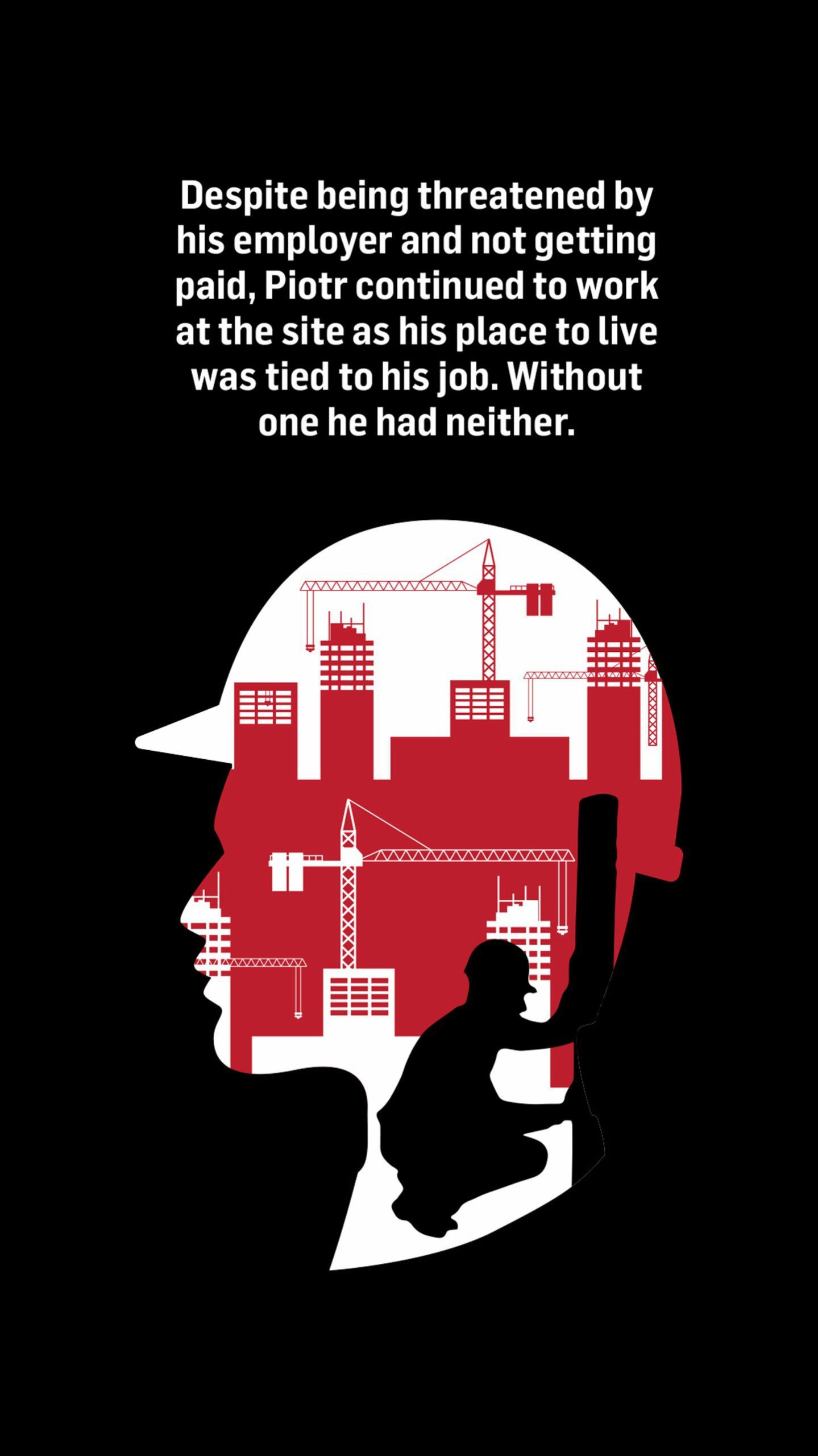
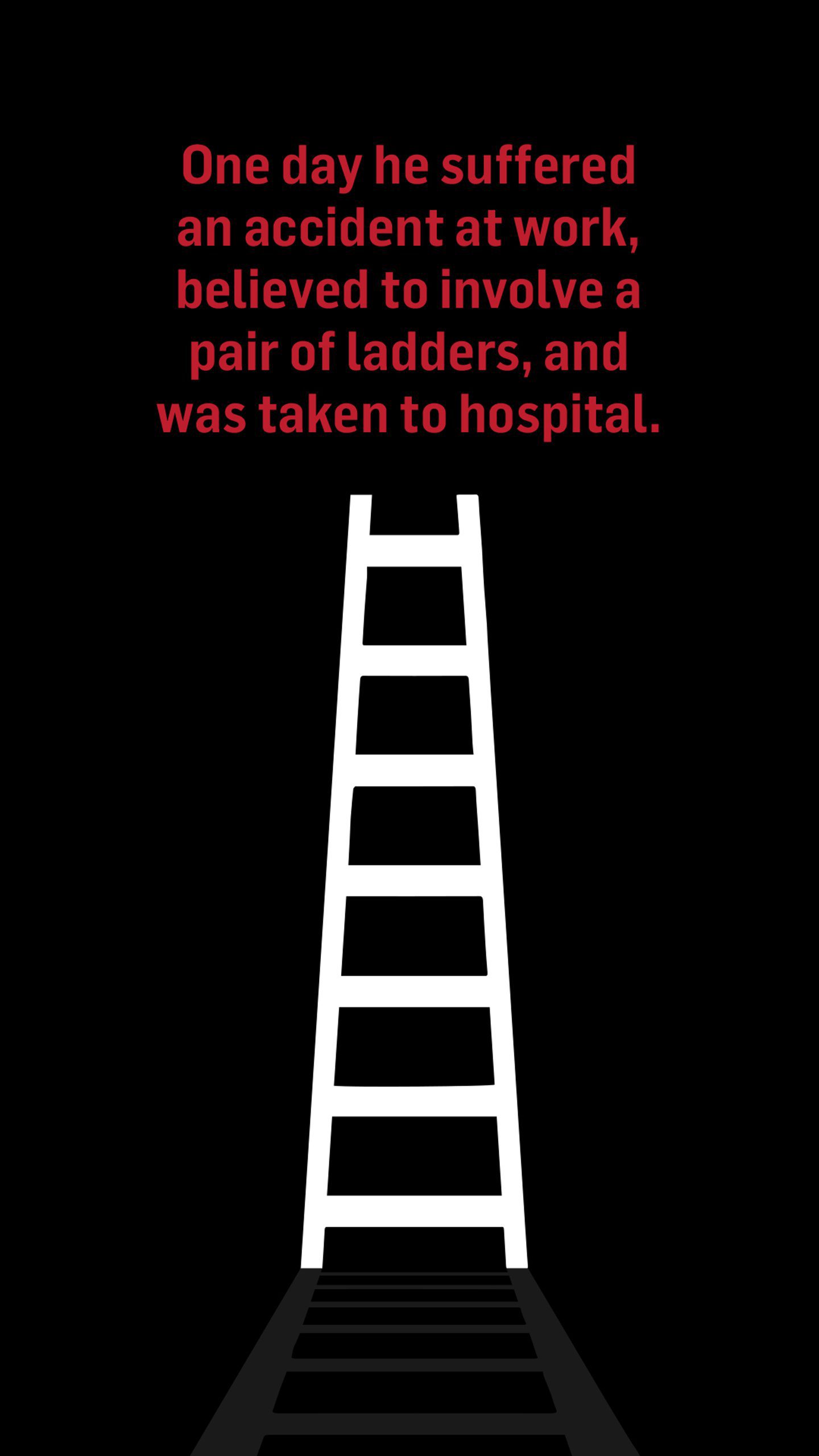
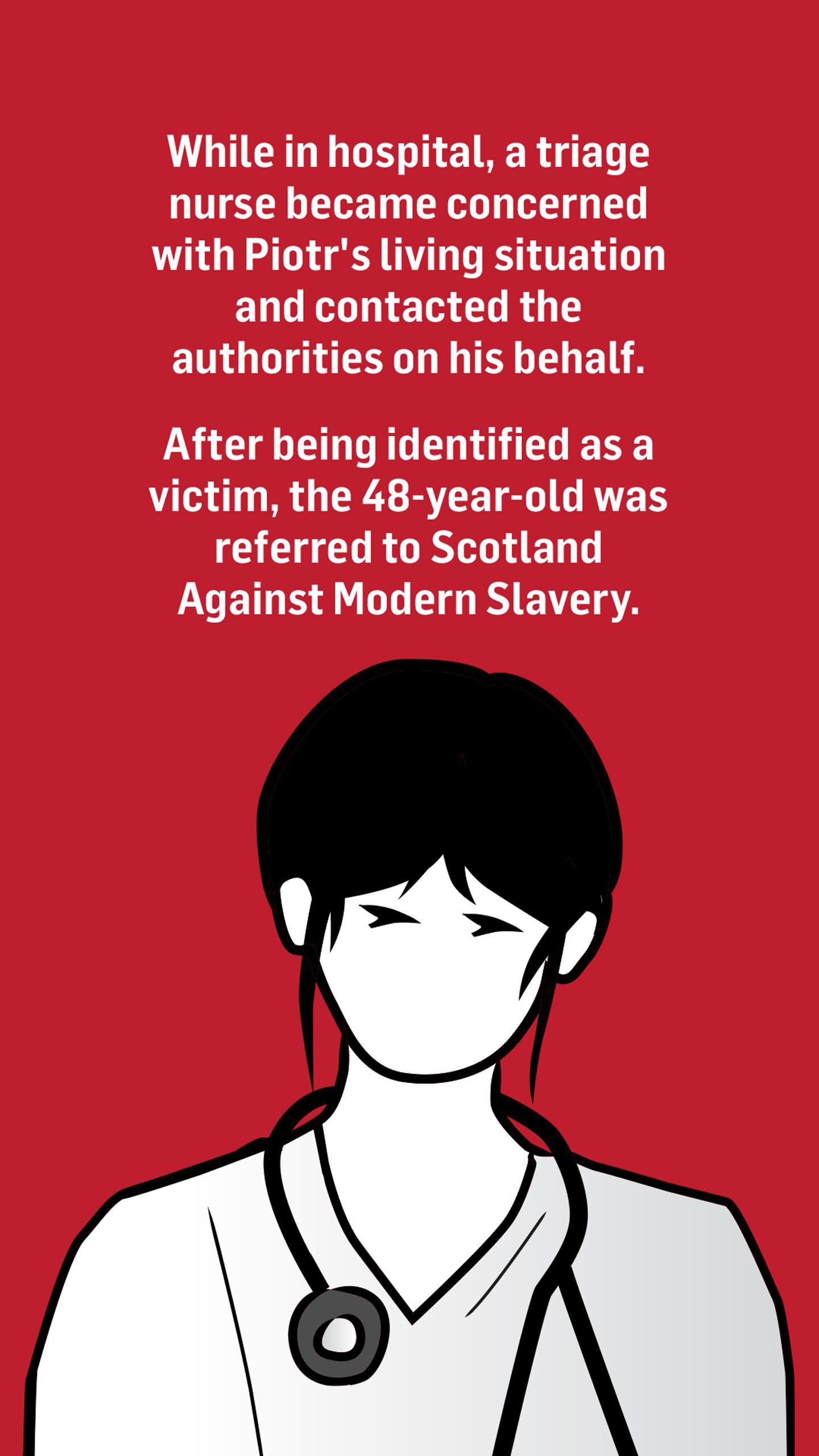
Shan Saba, founder of Scotland Against Modern Slavery, who helped Piotr in Aberdeen, believes the construction industry is at risk due to the complex contractor and sub-contractor relationships on site.
Shan warned that there are “red flags” that businesses and recruitment agencies need to be aware of when taking on workers.
These red flags include individuals who have control of all the documentation for a group of people, or the documents for someone they claim is their partner.
Groups of people shouldn’t have the same mobile number or bank details.
“You can’t even do a minute’s worth of work if you have the same email address because that’s your method of communication and you don’t want to share that with anyone,” said Shan – who also works for Brightwork recruitment.
“There’s all these flags of worker registration we have to look at.”
Businessowners becoming aware of suspicious activity around recruitment is not enough to solve the problem though, claims Shan.
He thinks that employers need to take a more active interest in their workers’ welfare and their daily lives to make sure they are connected into communities.
Normal everyday conversations about how they enjoyed the weekend or if they watched the big football game can be important identifiers.
Even just the ability to ask someone, in person, if they are okay.
“If you find that you’re not communicating with the workforce, or saying that’s just the way Polish people or Romanian people are and just leaving them to it, that shouldn’t be accepted in any work place,” said Shan.
Employers should not only seek this level of engagement with their direct workforce but also include agency staff and sub-contractors as well.
Modern slavery in rural communities
On April 30, this investigation joined an early morning raid on an alleged Romanian human trafficking ring which had been operating out of the Blairgowrie area for a number of years.
Officers on a multi-agency investigation burst down the doors of two properties.
Four people were arrested as part of the operation led by Detective Inspector Marc Lorente of Tayside division.
The suspects are all alleged to have links to the fruit picking industry in the region.
A number of potential victims of human trafficking were also identified.
While the raid in Blairgowrie might have shocked residents in Tayside, those working on addressing the issue know that rural communities have a hidden problem.
In 2020, Scotland Against Modern Slavery had more referrals of victims from Perth and Kinross than any other local authority.
Shan said: “The shock for me about Perthshire is that last year we’ve seen more victims referred to us from that area than from anywhere else in Scotland.”
Investigators and NGOs have highlighted the issue in identifying modern slavery crimes in rural communities due to a lack of reports from the public who are unaware that such illicit activities can be occurring in their towns and villages and are therefore not looking for the signs.
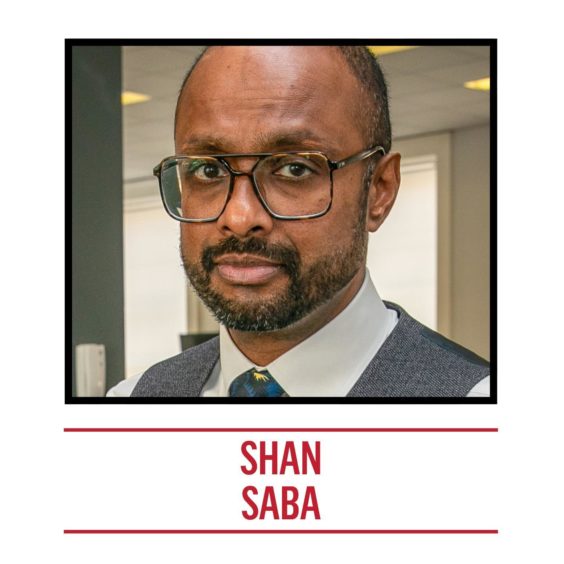
“A typical victim in Glasgow may be very different from a typical victim in Perthshire or in the North East of Scotland,” says Shan, “but there are cases across the board, across the whole of the UK.
“What I always find, is my bias, is that it doesn’t happen in Scotland, doesn’t happen where I live, it doesn’t happen here – but actually the shock is that in every local authority in Scotland victims have been rescued.
“And that is victims that have recognised that they are a victim and have been referred to the system – because for every one that is rescued there’s five potentially that aren’t.
“When I think about rural areas or distance, people are far more dispersed, they’re less visible, so you don’t know what’s going on.”
‘Completely exploited’
In recent months, human trafficking officers have been turning some of their focus to the fishing industry where there are fears that exploitation crimes are going severely underreported.
The setup of the fishing industry means the risk factors for exploitation are high.
Detective Inspector Caroline Gray, North-East division, explains: “The rationale (for underreporting) in the fishing industry is because it is an industry with a lot of migrant workers and its predominantly jobs which involve manual labour.
“Those two aspects lend themselves to the type of industry where there could be problems because they could have workers where there’s language barriers, where they’re a long way from home, and those types of vulnerabilities could potentially make them susceptible to being exploited.
“Something that we’ve been doing on an ongoing basis is visiting the ports throughout the Moray and Aberdeenshire coast and the harbour in Aberdeen itself.”
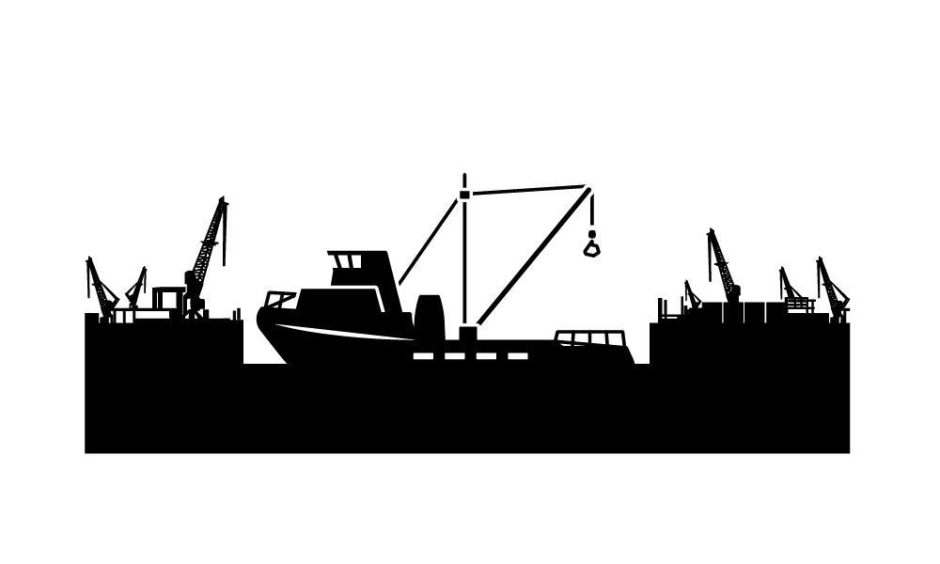
Detective Inspector Calum Smith, Highlands and Islands division, recalled an instance around three years ago of a slavery situation within the fishing industry on the Western Isles.

A number of fishermen, that he believes were African, had their passports removed and were being “completely exploited” in Stornoway.
Unlike in the vast majority of victims discovered in other branches of human trafficking and modern slavery, the nationalities tend to be different within the fishing trade.
The most prevalent nationalities of potential victims being reported in fishing are Philippines, Sub-Saharan Africans, Etruria, Portuguese and Spanish.
Are you a victim of human trafficking or modern slavery in Scotland? Have you witnessed it in your area? Call the Modern Slavery Helpline on 08000 121 700. Or call Police Scotland on 101 or 999 in an emergency.
If you would like to speak to our Impact investigations reporter Dale Haslam please email Dale.Haslam@ajl.co.uk
The Exploited
The Exploited is a special investigation exposing the hidden prevalence of human trafficking and modern slavery in our local communities. Across rural Perthshire and the Highlands to urban Aberdeen and Dundee – victims, and their abusers – are hiding in plain sight.
Read the full series:
- Young mother raped daily in Perth flat after being trafficked across Europe
- Trafficked women brought to Dundee and sold online for sex
- London teenagers forced to smuggle drugs into Inverness by organised crime gangs
- Fears Vietnamese trafficking gangs will bring crystal meth labs to north and north-east
Credit
- Words by Sean O’Neil
- Design by Cheryl Livingstone
- Illustrations and graphics by Roddie Reid
- Data visualisations by Lesley-Anne Kelly
- Videos and photography by Drew Farrell, Steve Brown and Blair Dingwall